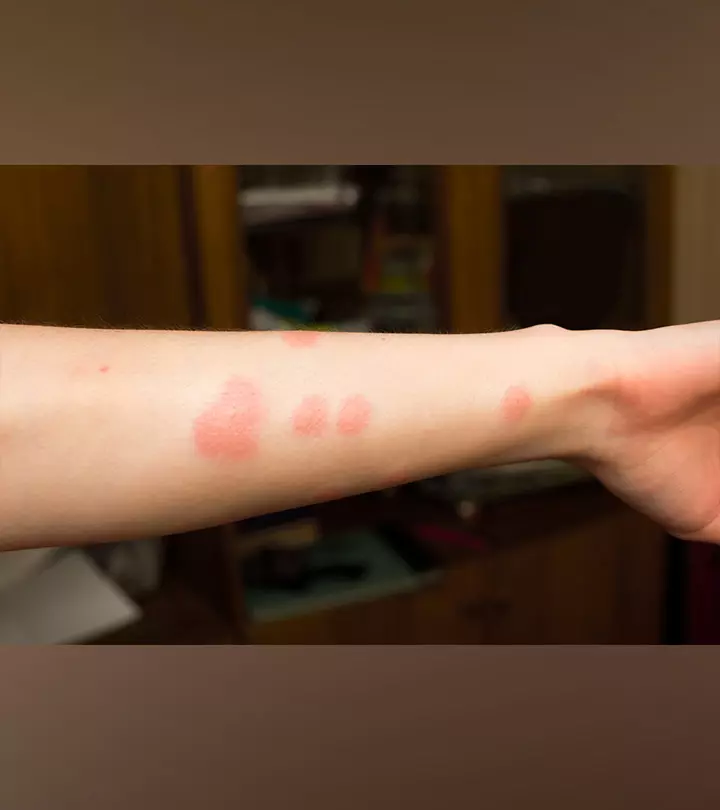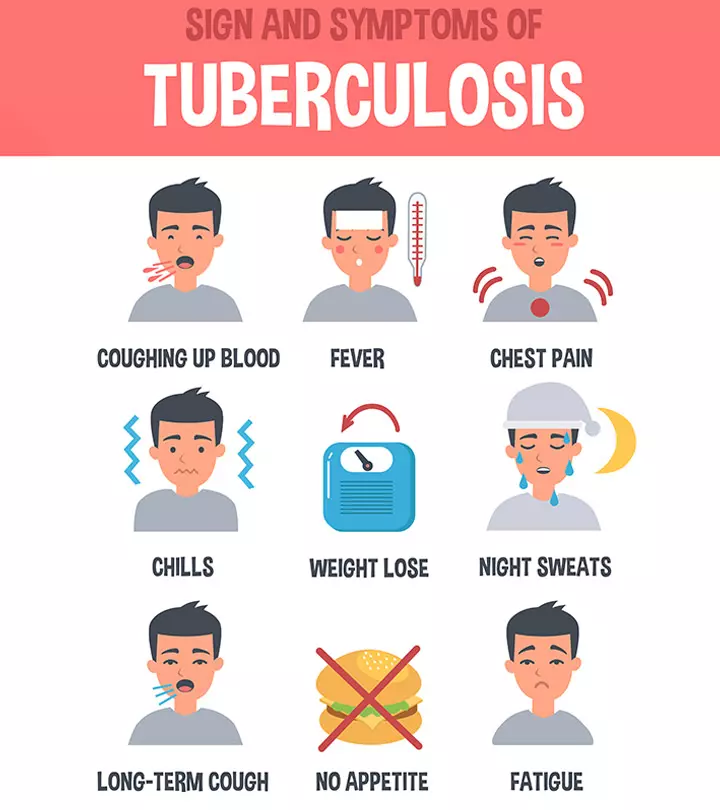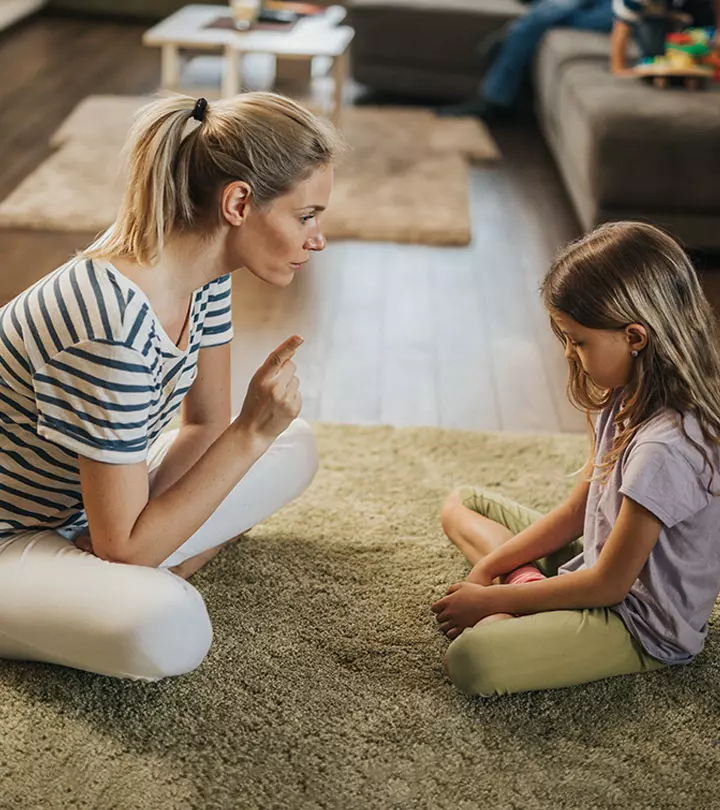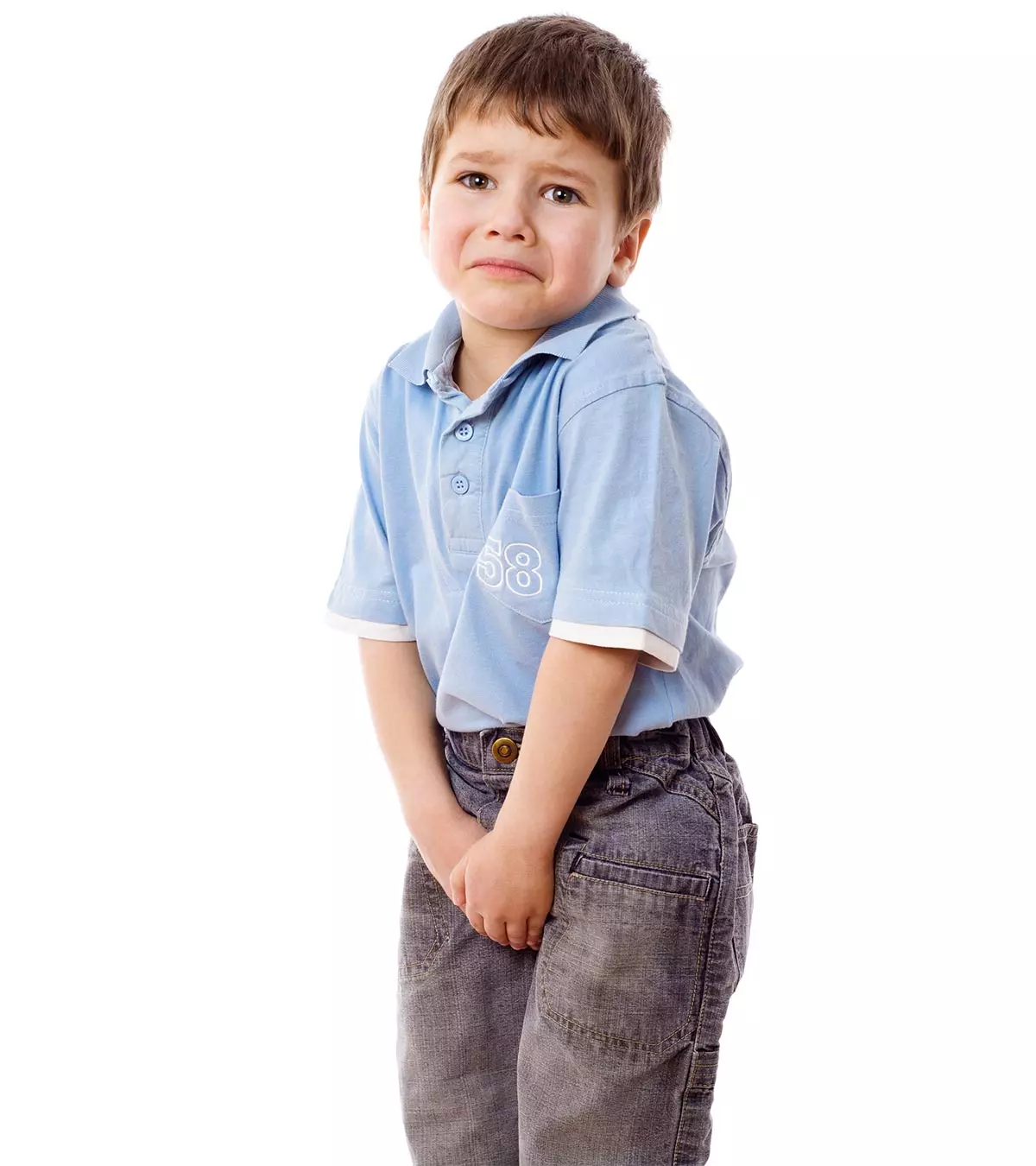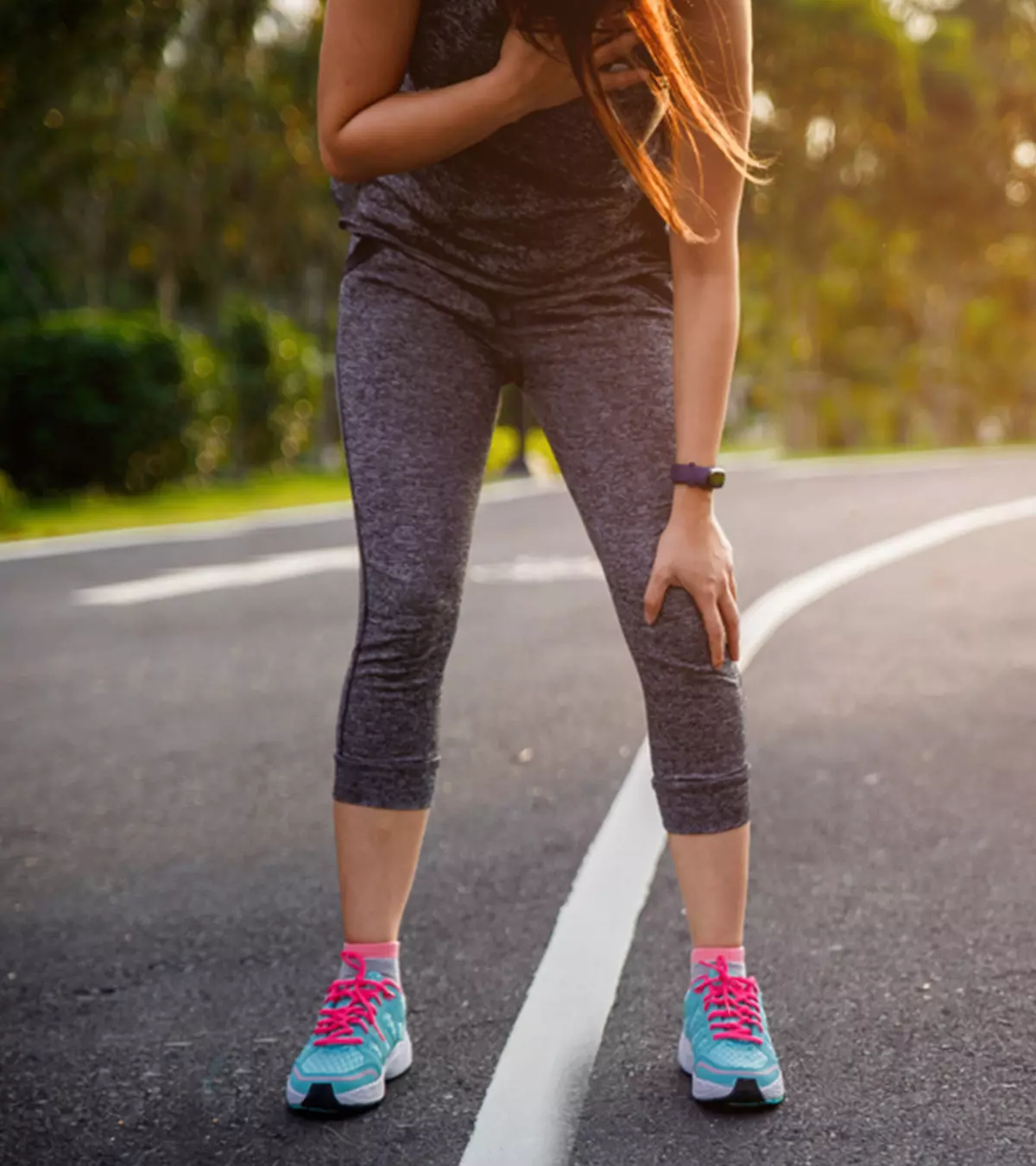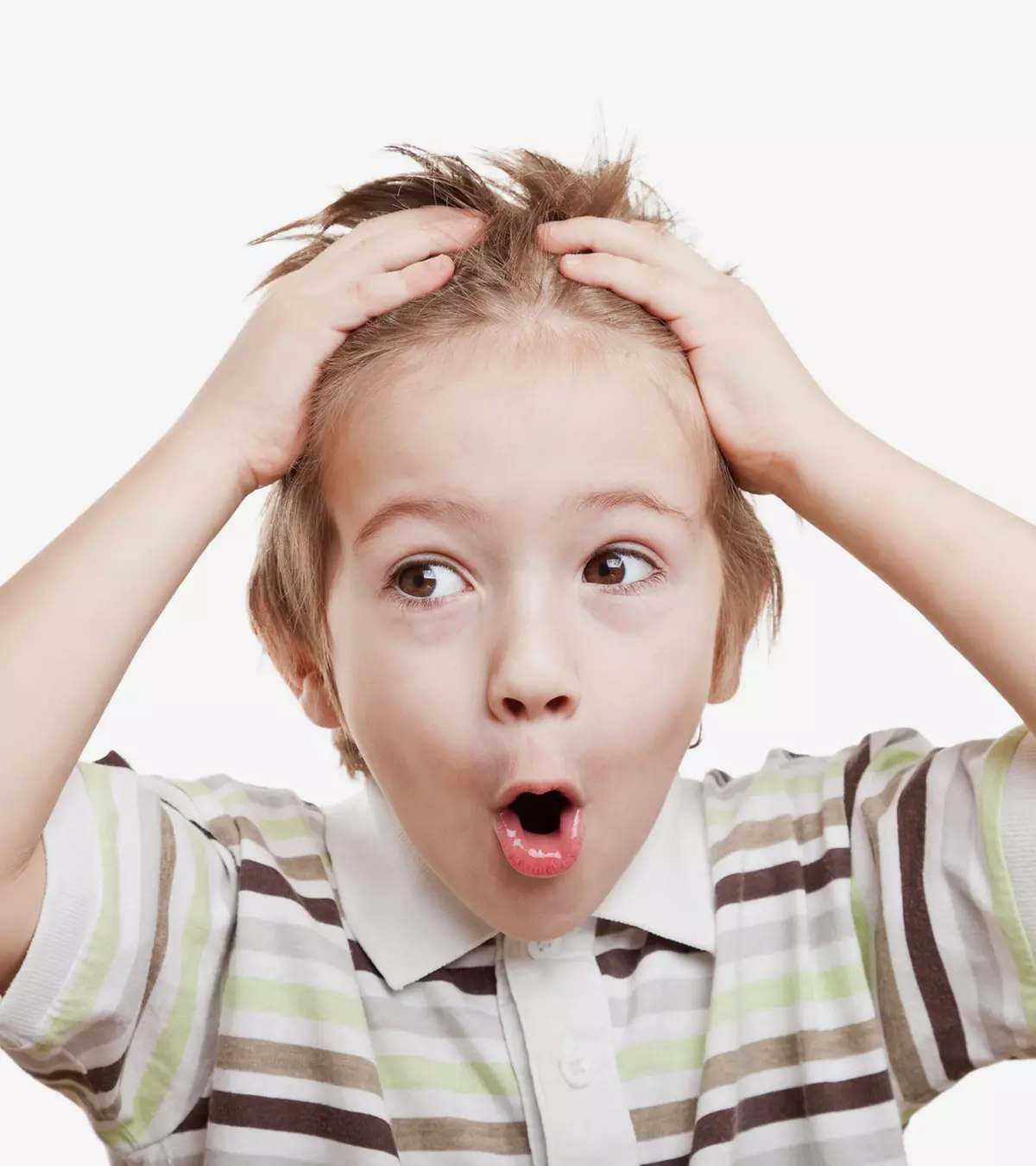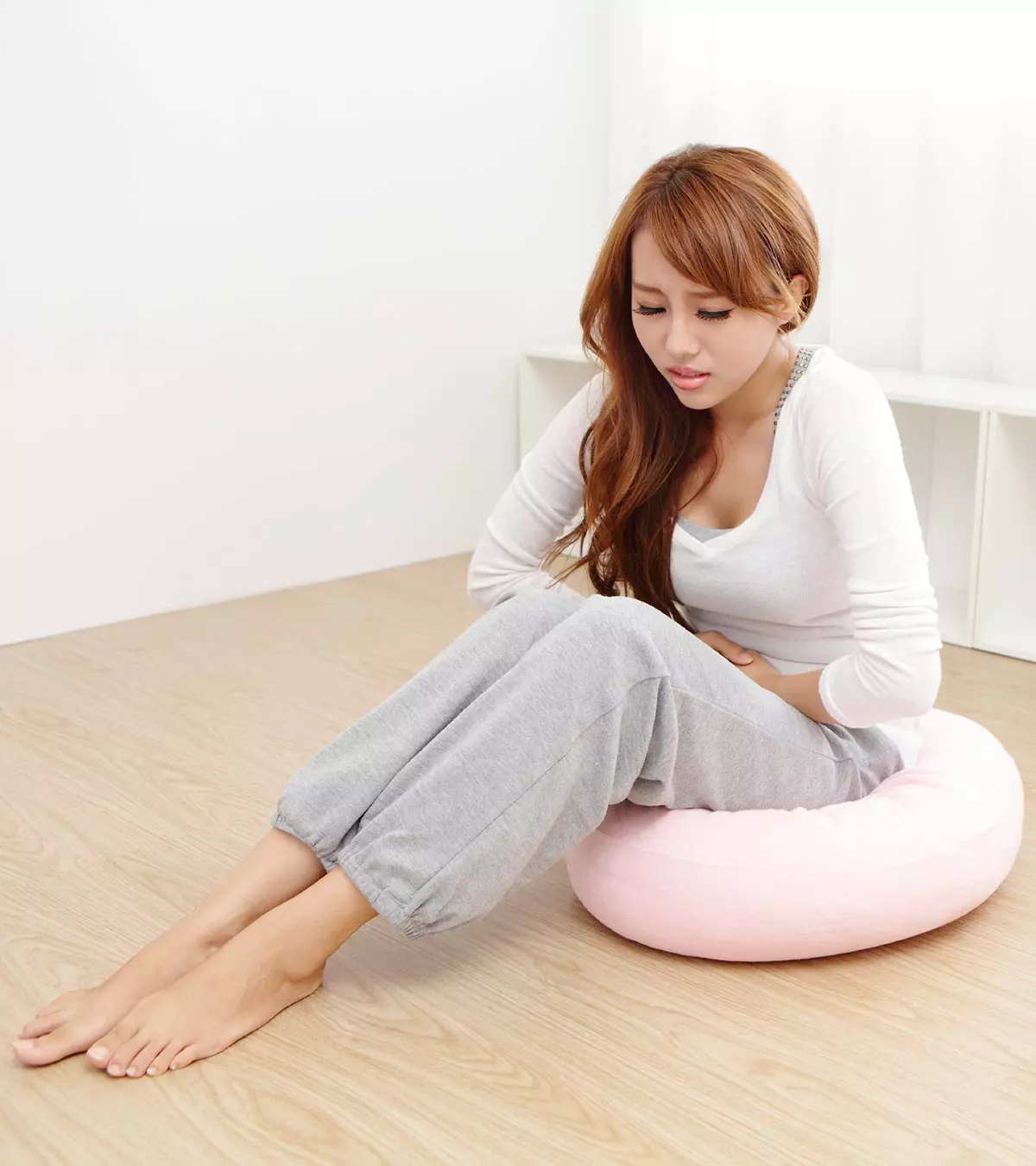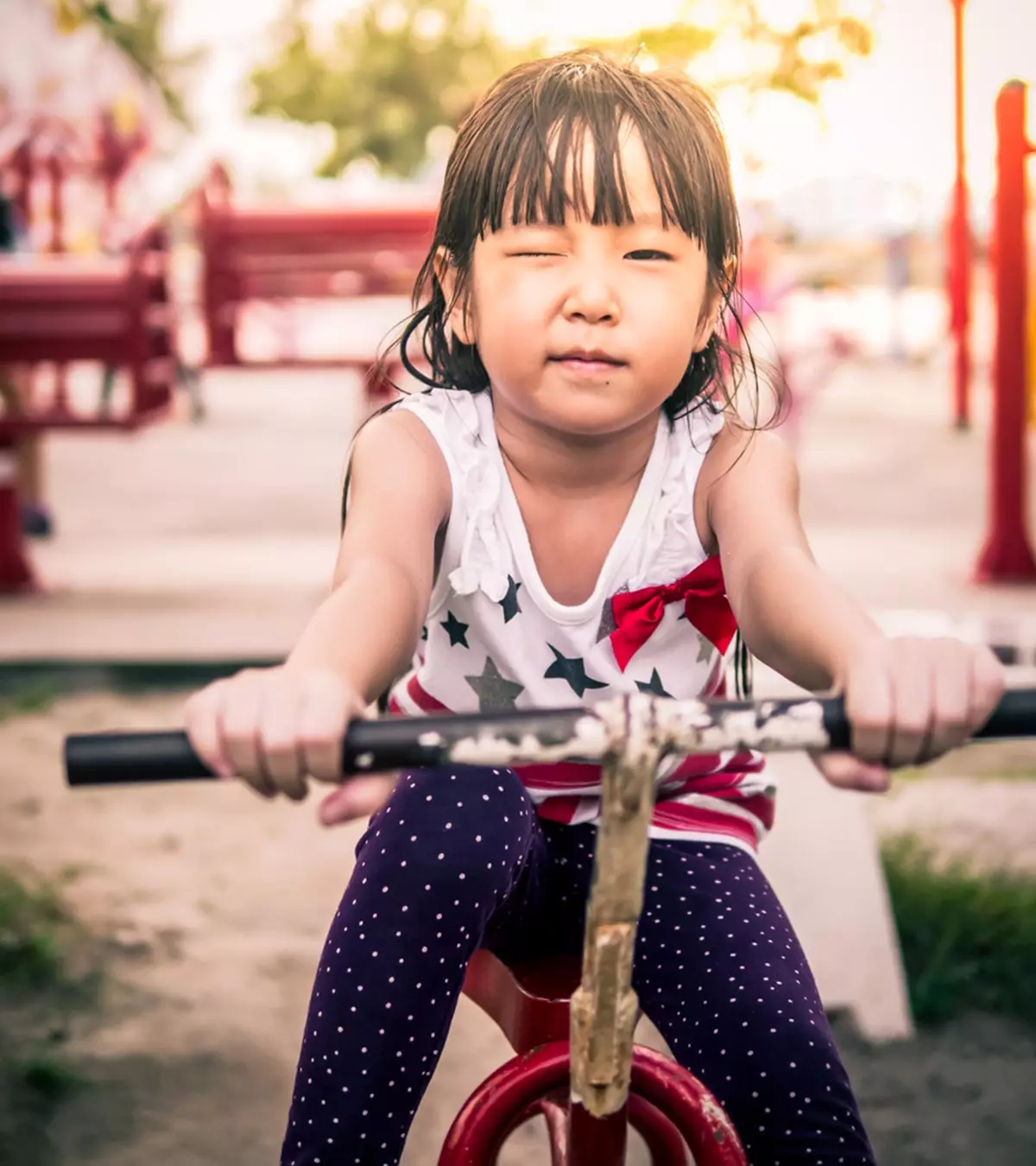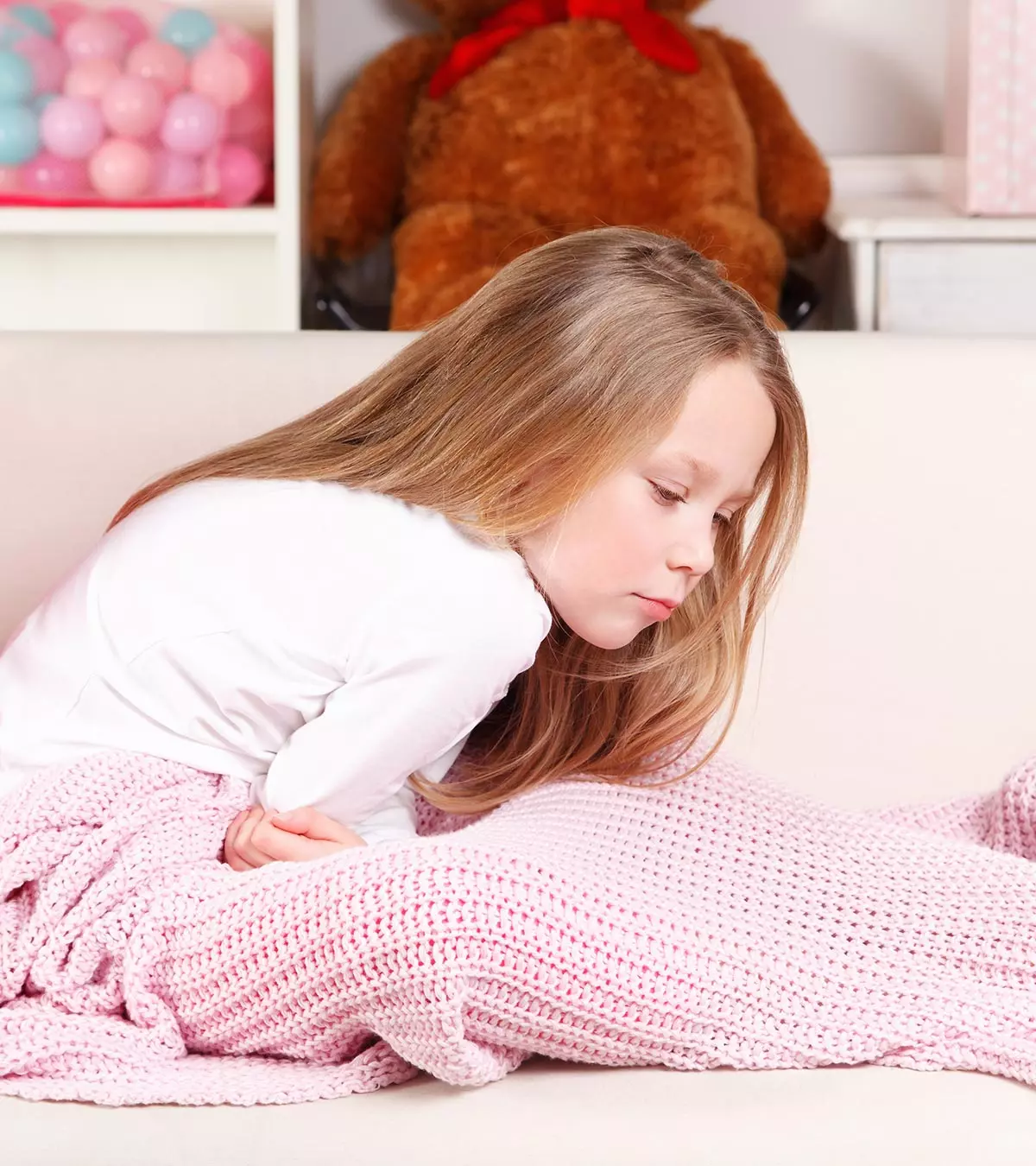
Image: Shutterstock

The onset of psoriasis in children is a common occurrence. Psoriasis is a non-transmittable skin condition where a child’s skin cells multiply rapidly, leading to skin changes. A typical sign of this condition is the build-up of scales on the skin surface.
Additionally, a characteristic small, round, red rash called the plague could develop on the skin, causing itchiness and a burning sensation in children. The plagues commonly arise in the scalp, knees, trunk, and elbows.
Though the exact cause of this disorder is unknown, it could be caused by the overactivity of the immune system and genetic factors. Additionally, a few varying triggers are known to worsen the signs of this condition in children.
Browse through this post to learn more about the signs and symptoms, diagnostic methods, and treatments for psoriasis in children.
Key Pointers
- Psoriasis is a skin condition that causes red, itchy rashes that may also cause a burning sensation.
- Genetics and environmental factors might trigger the disorder in children.
- Children with psoriasis may have an increased risk of developing metabolic disorders such as hyperlipidemiaiA condition characterized by high levels of fats (lipids) in the blood, which can increase the risk of heart disease and stroke. or diabetes when they grow older.
- Although the skin condition has no treatment, topical ointments, phototherapy, and certain medications may help manage the symptoms.
Can A Child Get Psoriasis?
According to the American Academy of Dermatology Association, children of any age, from newborns to teenagers, can get psoriasis (1). Another study found that 40% of adult patients with psoriasis reported the symptoms in their childhood, and one-third among them showed signs of the disorder before 16 years (2).
Signs And Symptoms Of Psoriasis In Children
The symptoms of pediatric psoriasis depend on the type, as they are unique to each kind, and often can be mistaken for diaper rash, cradle cap, or yeast infection.
However, here are a few common symptoms that might help you make the initial diagnosis.
- Round, well-circumscribed spots covered in silvery-white scale
- Lesions on the scalp, elbow, knees, and gluteal creases
- Pitted fingernails that might itch
- Bright red rash in the skin’s folds near the diaper area
- Itching, pinpoint bleeding, and burning sensation near the lesions
There is no permanent treatment for psoriasis, but you can manage the symptoms and prevent them from worsening with proper medication. Usually, psoriasis occurs in cycles, with the condition flaring for a few weeks or months, lessening over a period, and then returning. To understand more about your child’s psoriasis, you need to know about the various types of psoriasis.
Types Of Psoriasis In Children
Psoriasis can be classified into five types, with each type displaying different symptoms. The guttate and plaque psoriasis types are most common among children. Let’s first discuss these two types.
1. Guttate psoriasis
This type of psoriasis is more frequent in older children and young adults. In many children, guttate psoriasis is often seen after one to three weeks of Streptococcal infection. The lesions are round, about 3cm in diameter, and are distributed symmetrically on the trunk, shoulders, elbow, wrists, hands, fingers, and sometimes, on the thighs and legs. Generally, plaques are not seen in this type of psoriasis.
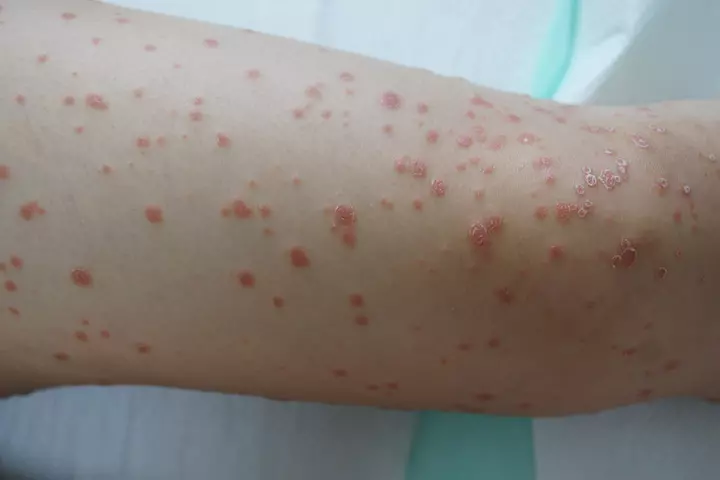
2. Plaque psoriasis
It is characterized by raised hard, and inflamed red patches, also called plaques, which may be painful and itchy. Sometimes, these red patches are covered with a silvery white build-up of dead cells. The plaques can be found anywhere on the skin, but usually appear on the scalp, knees, elbows, and torso.
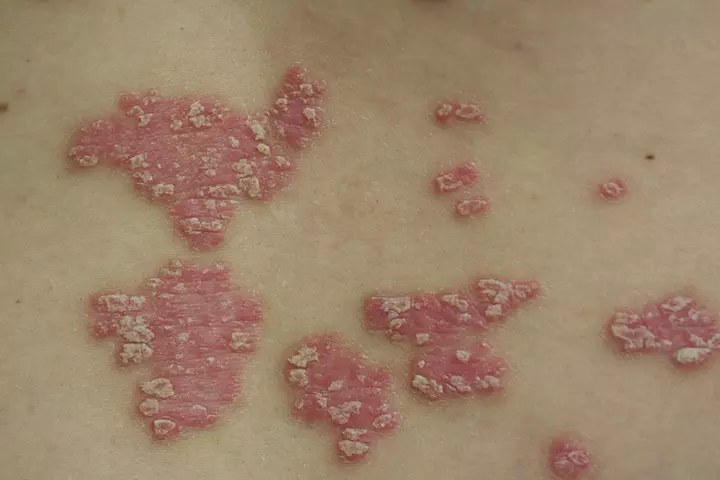
Each of these types exhibits specific symptoms, and so, what could be the causes of psoriasis in children?
Causes Of Psoriasis
Psoriasis is an autoimmune disease, wherein an overactive immune system causes the skin to regenerate faster than usual. Although the exact causes behind the aggravated immune system are unknown, research indicates that genetics and environmental factors might trigger the disorder (3).
Psoriasis can occur in cycles, meaning the symptoms come and stay for a few weeks to a couple of months; then go away completely and suddenly return.
Here are a few triggers that might flare up or worsen the symptoms of psoriasis (2).
- Infections (Streptococcus)
- Cold weather
- Stress
- Usage of drugs such as chloroquine and systemic corticosteroidsiA class of drugs that mimic the effects of cortisol, a hormone produced by the adrenal gland to alleviate inflammation.
- Obesity
Risks And Complications Of Psoriasis In Children
Studies found that patients diagnosed with psoriasis under the age of 18 have a two-fold risk of developing:
- Hyperlipidemia
- Obesity
- Hypertension
- Diabetes mellitus
- Rheumatoid arthritisi, a chronic autoimmune inflammatory condition characterized by swelling, stiffness, and joint pain (4)
Besides the risk factors mentioned above, having a family member with psoriasis can also increase one’s risk of developing the condition. According to the data gathered from the 2016 National Psoriasis Foundation Survey, having both parents with psoriasis raised the likelihood of a child developing psoriasis by 65%. On the other hand, the chance of developing psoriasis rises by 25% when only one parent has the condition and by 4% when neither parent has psoriasis.

Probability of children to inherit psoriasis from their parents
Source: Probability that a child will inherit psoriasis from parents U.S. Expert says
Expert saysWhen To See The Doctor?
Parents are generally confused about psoriasis. They consider it a diaper rash, allergy, or heat rash. Consult your doctor if you notice rashes and scaling on your child’s skin, and if these rashes are persistent and do not go away with topical treatment. Psoriasis rashes in children can sometimes resemble diaper rashes or skin infections, so it is best to consult your doctor for an accurate diagnosis.
Diagnosis Of Psoriasis In Children
In most cases, psoriasis can be diagnosed with a simple physical examination. Your doctor might enquire about your family history, medications, and infections. Diagnosis is mainly clinical. In very rare cases skin biopsy is done. If the symptoms are not clear and your doctor feels the need for further diagnosis, they may do a skin biopsy, wherein a sample of the skin is sent to the lab for examination under the microscope.
Psoriasis can also have an impact on your child’s psychological well-being. When the condition flares up, it may result in skin rashes in children, skin scaling, itching, and burning sensation. So, children may become self-conscious and stop interacting with other children. How can you help your child? The next section covers the treatment options for psoriasis.
Volunteer mentor with the US National Psoriasis Foundation and psoriasis patient expert Sabrina Skiles says, “It is important to talk to your child about how they’re feeling when they experience a flare-up.”
Treatment For Psoriasis In Children
As of now, there is no specific cure for psoriasis, and treatment options aim at gradually subsiding the symptoms. Since psoriasis is a relapsing disorder, you might need a long-term treatment plan. There are various treatment options available, and your doctor will suggest the best course of action based on your child’s symptoms and severity of the case.
Here are a few details about some of the treatment options available. These treatments might help reduce the symptoms of mild to severe psoriasis.
- Topical treatments: These include lotions, ointments, and creams applied topically to provide relief from itching and burning sensations. Your child’s doctor might prescribe Salicylic acid as a keratolytic agent to treat small plaques on the scalp, palms, and soles in children older than six years (2). Sometimes, they may also prescribe vitamin D creams.
Topical treatments are said to be effective with fewer side effects, but might have to be applied multiple times throughout the day. Petroleum jelly helps to keep the skin moist and prevent psoriasis. So, explain the situation to your child and remind them to apply the medication on time. You can also use electronic reminders to schedule the timings in a day.
 Quick fact
Quick fact- Phototherapy: Exposure to ultraviolet radiation, known as phototherapy, is said to reduce lesions and inflammation. Sunbathe early in the morning and late in the evening. These rays of the sun are ultraviolet rays. However, both natural and artificial light might be effective in reducing the symptoms of psoriasis. Opt for phototherapy only if the doctor prescribes it, and also take care that your child is not overexposed to artificial light, as it might worsen the symptoms (5)
- Oral medications: Your child’s doctor might prescribe oral medications with immunomodulatoryiThe ability of a chemical or medicine to modify or influence the functioning of the immune system to combat diseases and infections. and anti-inflammatory properties in the case of severe psoriasis. Usage of oral medications should be done only when the other treatment options fail to work, as these medications have side effects, including growth retardation in children (2). Closely monitor your child for any side effects, and keep in touch with your child’s healthcare provider.
- Keep the skin moist. Warm water baths and adding olive oil or other oils to the bathing water help keep the skin moist. Use of moisturizers also helps.
Administering biologics and immunosuppressants, either through injection or intravenous infusion, can also help treat and manage the symptoms of moderate to severe psoriasis. Another important aspect in treating psoriasis is to make sure your child is not scared of a visit to the doctor. “If your child is five and under, take a doctor’s appointment. Saying things like ‘the doctor is going to make you feel so much better. He is going to give you a special medicine to help with your psoriasis spots’, might help,” says Sabrina.
 Things to know
Things to knowPrevention Of Psoriasis In Children
You cannot prevent psoriasis as it is an autoimmune disease, but you can minimize the flare-ups by eliminating the triggers. Identify what is causing the symptoms and try to eliminate them from your child’s life. Stress is an important triggering factor. Stress of exams or tensions at home or other kids promote psoriasis.
A volunteer with The National Psoriasis Foundation, US, and a psoriasis patient expert Alisha M. Bridges recommends these tips to, minimize and manage psoriasis flare-ups:
- Staying on top of the treatment regimen and communicating with the doctor.
- Trying to get a head-start on flare-ups by paying attention to the child’s body, and recognizing any new spots, or areas that feel itchier.
- Moisturizing the skin, especially in winter.
- Changing shower and bath water to cooler temperatures.”
Lifestyle changes, including eating healthy, exercising, and getting adequate sleep, can also help your child’s body cope with the symptoms of psoriasis. Also, keeping your child’s skin clean and moisturized might reduce irritation and itching. Using sun protection creams can also be helpful in preventing flare-ups due to direct sun exposure.
Home Remedies For Psoriasis In Children
Along with your doctor’s treatment plan, you can also try a few home remedies for the management of the symptoms of psoriasis in children. However, it should be noted that these remedies do not have any scientific backing and should be used only after consulting with your child’s doctor.
- Applying aloe vera extract is said to show higher rates of recovery with low side effects.
- A herbal mixture of Achillea Herba, Allium Sativum, Calendula Flos, Taraxaci Radix, Urtica Folium, and Veronica Officinalis, when applied topically, is said to reduce the severity of psoriasis symptoms.
- Applying turmeric mixture on lesions is also said to be effective, as turmeric has anti-inflammatory and antioxidant properties (6).
- Anecdotal evidence suggests that layering the skin with heavy cream or petroleum jelly can reduce the redness by locking in the moisture.
- According to the National Psoriasis Foundation, organic apple cider vinegar is said to relieve itching from scalp psoriasis. Dilute vinegar and water in a one-to-one ratio and apply it on the scalp.
- Soaking your child’s skin in warm water mixed with the Dead Sea or Epsom salts might help remove the scaling.
- Anecdotal evidence suggests that using shampoos and creams containing tea tree oil also helps relieve the symptoms of psoriasis. However, make sure your child is not allergic to it.
- Massaging may also help in improving lymph circulation and aid relaxation (7).
Less Common Types Of Psoriasis In Children
The other three types of psoriasis. These rarely occur in children, but it is important to know details about them.
1. Pustular psoriasis
If the lesions show as painful, white, pus-filled bumps, it could be pustular psoriasis. The skin around these bumps appears inflamed or reddened. In this type, the patient could suddenly develop symptoms, which could often be accompanied by fever, chills, severe itching, changes in heart rate, fatigue, and muscle weakness. These may need oral medications.
There are three different types of pustular psoriasis.
- General pustular psoriasis (GPP): It affects large areas of the body and is accompanied by flu-like symptoms.
- Localized pustular psoriasis or palmoplantar pustular psoriasis (PPPP): In this type, lesions are found on the palms, soles of the feet, the base of thumbs, and sides of heels.
- Acropustulosis: One of the rare types, symptoms may include itchy bumps or pustules on the fingers or toe tips.

2. Inverse psoriasis
This type of psoriasis is characterized by smooth patches of red skin in the folds of the skin, such as the armpits, groin, and under the breasts. Rubbing of the skin and sweating can further aggravate the symptoms. It is commonly found in obese people with skin folds.

3. Erythrodermic psoriasis
One of the rare forms of psoriasis, it disrupts the body’s normal temperature and fluid balance, leading to chills, swelling of feet and ankles, and elevated risk of pneumonia. You might also notice severe skin redness and skin shedding over a large area and in large sheets with severe pain and itching.
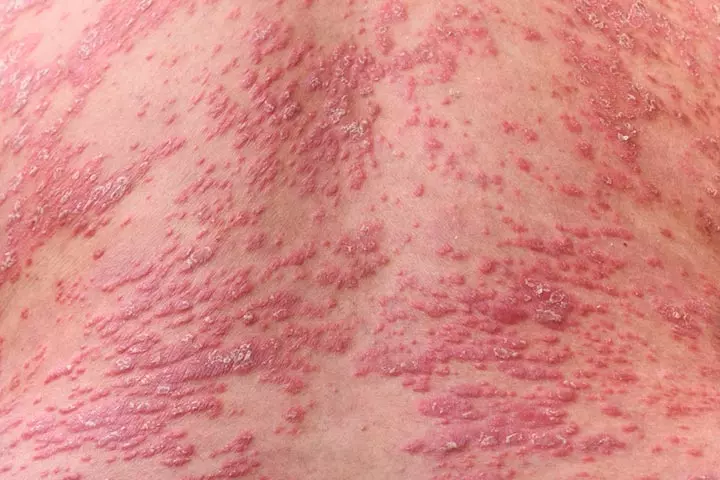
A condition related to psoriasis is psoriatic arthritis, a rare form of arthritis that affects those with psoriasis. It causes red, scaly, and itchy rashes along with inflamed joints. It is commonly seen in adults from ages 30 to 50, but might rarely appear in children.
Psoriasis may not just affect your child’s body, but also significantly impact their mental health. When the child has lesions or rashes in sensitive areas, such as the face or the genitals, they might get embarrassed to go out in public, fearing judgment and ridicule from peers. So, it is important that you monitor your child’s mental state and offer them emotional support. Being a part of psoriatic support groups could also help you and your child.
“You can simply say they are not doing anything wrong and the plaques are just part of the disease. Another important thing you can do for your child is to help them be their own advocate,” observes Sabrina.
Frequently Asked Questions
1. Is psoriasis a fungal or bacterial infection?
Psoriasis is mainly an autoimmune condition, but some research indicates a clear role of some bacteria, such as Corynebacterium, Propionibacterium, Staphylococcus, Streptococcus, etc., in the pathogenesis of psoriasis (8). Researchers have also found a link between fungal pathogens and psoriasis (9).
2. How can I tell the difference between eczema and psoriasis?
The following are the most common differences between eczema and psoriasis. The dermatologist may tell more differences based on the clinical appearance and other factors (10).
| Eczema | Psoriasis |
|---|---|
| Intense itching | Mild itching |
| More common in crooks of knees and elbows | More common on the face, buttocks, scalp, elbows, and knees. |
3. Is psoriasis always itchy?
Psoriasis is not always itchy but is a common symptom. Around 90% of all patients with eczema report itchiness as a symptom (11).
4. How does psoriasis spread?
Psoriasis is not contagious and does not spread from one person to another (12). However, if left untreated, it may spread to other body parts of an affected person.
5. What foods can help control my child’s psoriasis?
According to experts, following a low-calorie diet, containing fruits, veggies, nuts, and whole grains, may help manage and improve psoriasis severity (13) (14). However, it is best to follow individualized dietary suggestions and eat a well-balanced diet, containing healthy foods from different food groups.
6. Should I keep my child’s skin moist or dry to control psoriasis?
Dry skin in children can exacerbate psoriasis symptoms and may even worsen them. Hence, it is usually advised to keep the skin moisturized using petroleum jelly and lubricants to keep psoriasis in check (14).
7. Why is psoriasis so common in children nowadays?
The reason for the increase in psoriasis prevalence is not well understood. However, genetic and environmental factors are believed to play a role.
Psoriasis in children is a condition that leads to the development of a scaly skin surface and affects the child’s self-esteem if left untreated. A child of any age can be affected by this condition. Therefore, it is imperative to ensure that you keep them away from triggers and take proper care of them. If the signs of psoriasis do not go away even after using topical ointments and creams, you should consult the doctor immediately to begin its treatment.
Infographic: Which Drugs Are Used To Treat Psoriasis In Children?
There are no defined guidelines for treating pediatric psoriasis. Though there are certain pathophysiological differences between pediatric and adult psoriasis, doctors often take reference from the drugs proven effective in adults. The infographic below lists the medicines usually prescribed to children with psoriasis.
Some thing wrong with infographic shortcode. please verify shortcode syntax
Illustration: Psoriasis In Children: Symptoms Types & How To Deal With It

Image: Dall·E/MomJunction Design Team
Psoriasis in children may be quite easily confused with other conditions. Learn how to tell the difference between eczema and psoriasis with this video.
References
1. Can a child have psoriasis? American Academy of Dermatology Association
2. Sandipan Dhar, et al.; Psoriasis In Children: An Insight; Indian Journal of Dermatology (2011).
3. Adriana Rendon and Knut Schakel; Psoriasis Pathogenesis and Treatment; International Journal of Molecular Sciences (2019).
4. I.M.G.J Bronckers, et al.; Psoriasis In Children And Adolescents: Diagnosis, Management and Comorbidities; Paediatric Drugs (2015).
5. Azadeh Izadyari Aghmiuni and Azim Akbarzadeh Khiavi; Medicinal Plants to Calm and Treat Psoriasis Disease; Intechopen (2017).
6. Sami A Gabr and Ahmad H Alghadir; Phytotherapy and psoriasis: Complementary and alternative medications; World Journal of Dermatology (2014).
7. Integrative Approaches To Care; National Psoriasis Foundation
8. Farida Benhadou, et al.;Psoriasis and Microbiota: A Systematic Review; National Library of Medicine.
9. Mostafa Chadeganipour, et al.;Fungal Infections among Psoriatic Patients: Etiologic Agents, Comorbidities, and Vulnerable Population; National Library of Medicine.
10. WHAT’S THE DIFFERENCE BETWEEN ECZEMA AND PSORIASIS?; American Academy of Dermatology Association.
11. Psoriasis Itch:8 Dermatologist-Approved Home Treatments to Get Some Relief; CreakyJoints.
12. Causes; Psoriasis; NHS.
13. Can Changing Your Diet Help Treat Your Psoriasis?
14. A deeper look at psoriasis
Community Experiences
Join the conversation and become a part of our nurturing community! Share your stories, experiences, and insights to connect with fellow parents.
Read full bio of Dr. Mubina Agboatwalla
Read full bio of Dr. Ritika Shah
Read full bio of Swati Patwal
Read full bio of Ghazia Shah





